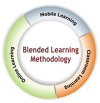A Dietary Assessment Training Course Path: The Italian IV SCAI Study on Children Food Consumption
- PMID: 33777877
- PMCID: PMC7994926
- DOI: 10.3389/fpubh.2021.590315
A Dietary Assessment Training Course Path: The Italian IV SCAI Study on Children Food Consumption
Erratum in
-
Corrigendum: A Dietary Assessment Training Course Path: The Italian IV SCAI Study on Children Food Consumption.Front Public Health. 2021 Jun 9;9:708291. doi: 10.3389/fpubh.2021.708291. eCollection 2021. Front Public Health. 2021. PMID: 34178936 Free PMC article.
Abstract
The eating patterns in a population can be estimated through dietary surveys in which open-ended assessment methods, such as diaries and interviews, or semi-quantitative food frequency questionnaires are administered. A harmonized dietary survey methodology, together with a standardized operational procedure, in conducting the study is crucial to ensure the comparability of the results and the accuracy of information, thus reducing uncertainty and increasing the reliability of the results. Dietary patterns (i) include several target variables (foods, energy and nutrients, other food components), (ii) require several explanatory variables (age, gender, anthropometric measurements, socio-cultural and economic characteristics, lifestyle, preferences, attitudes, beliefs, organization of food-related activities, etc.), and (iii) have impacts in several domains: imbalance diets; acute and chronic exposures affect health, specifically non-communicable diseases; and then sanitary expenditure. On the other hand, food demand has impacts on the food system: production, distribution, and food services system; food wastes and other wastes generated by food-related activities of the households (e.g., packaging disposal) have consequences on the "health of the planet" which in turn can have effects on human health. Harmonization and standardization of measurement methods and procedures in such a complex context require an ad hoc structured information system made by databases (food nomenclatures, portion sizes, food atlas, recipes) and methodological tools (quantification methods, food coding systems, assessment of nutritional status, data processing to extrapolate what we consider validated dietary data). Establishing a community of professionals specialized in dietary data management could lead to build a surveillance system for monitoring eating habits in the short term, thus reducing costs, and to arrange a training re-training system. Creating and maintaining the dietary data managers community is challenging but possible. In this context, the cooperation between the CREA Research Centre for Food and Nutrition and the Italian National Health Institute (ISS) promoted and supported by the Italian Ministry of Health may represent a model of best practice that can ensure a continuous training for the professional community carrying out a nutritional study.
Keywords: dietary assessment; e-learning; innovative process; professional community; training methods.
Copyright © 2021 Turrini, Catasta, Censi, Comendador Azcarraga, D'Addezio, Ferrari, Le Donne, Martone, Mistura, Pettinelli, Piccinelli, Saba, Sette, Barbina, Guerrera, Carbone and Mazzaccara.
Conflict of interest statement
The authors declare that the research was conducted in the absence of any commercial or financial relationships that could be construed as a potential conflict of interest.
Figures
References
-
- World Health Organization . Vienna Declaration on Nutrition and Noncommunicable Diseases in the Context of Health. 2020. WHO Ministerial Conference on Nutrition and Noncommunicable Diseases in the Context of Health 2020. (2013). Available online at: https://www.euro.who.int/__data/assets/pdf_file/0003/234381/Vienna-Decla...
-
- WHO . Framework and Standards for Country Health Information Systems. (2008). Available online at: https://www.who.int/healthinfo/country_monitoring_evaluation/who-hmn-fra...
-
- World Health Organization Regional Office for the Eastern Mediterranean Al Jawaldeh A Osman D Tawfik A . Food and Nutrition Surveillance Systems: A Manual for Policy-Makers and Programme Managers? (2014). Available online at: https://apps.who.int/iris/handle/10665/259796
-
- WHO . Integrated Surveillance of Noncommunicable Diseases (iNCD). (2015). Available online at: https://ec.europa.eu/health/sites/health/files/indicators/docs/incd_en.pdf
-
- Global Burden of Disease 2015 Risk Factors Collaborators . Global, regional, and national comparative risk assessment of 79 behavioural, environmental and occupational, and metabolic risks or clusters of risks, 1990–2015: a systematic analysis for the Global Burden of Disease Study 2015. Lancet. (2015) 388:1659–724. 10.1016/S0140-6736(16)31679-8 - DOI - PMC - PubMed
MeSH terms
LinkOut - more resources
Full Text Sources
Other Literature Sources





